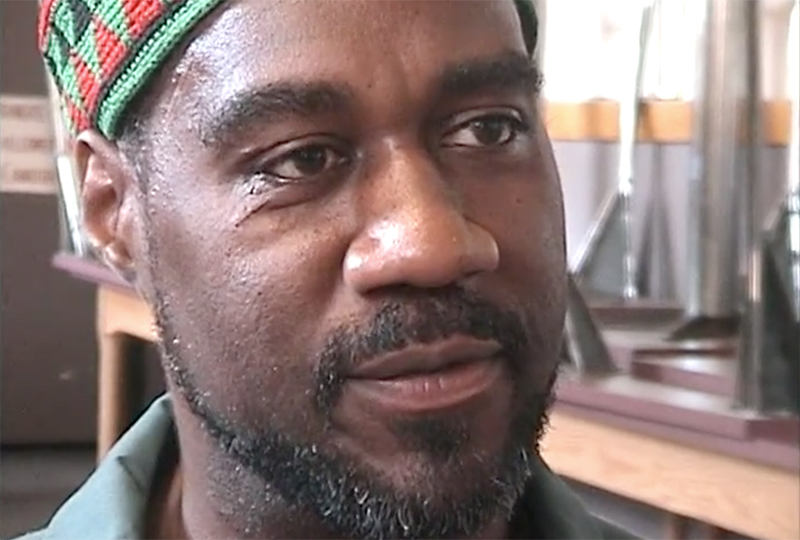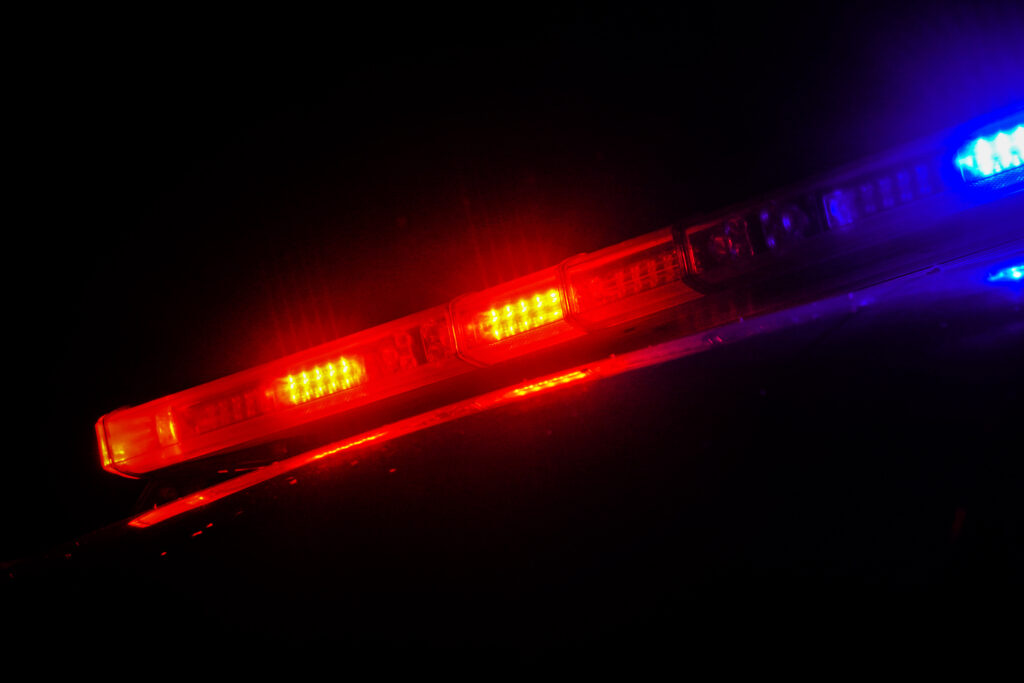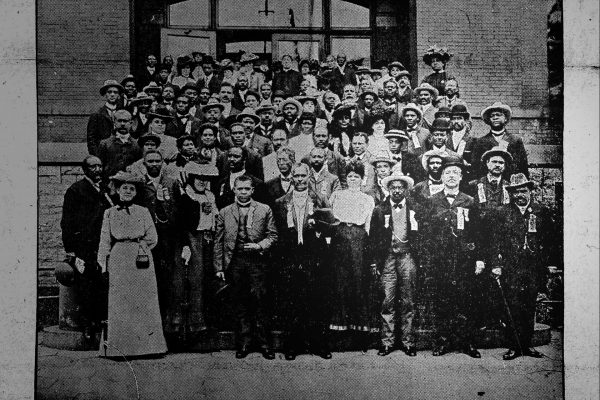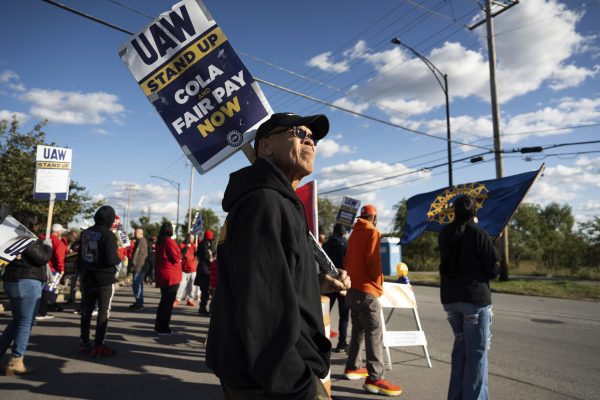In 1971, two weeks shy of his twentieth birthday, Anthony Bottom, a young Black Panther, along with another Panther, Albert Nuh Washington, were arrested following a shootout with San Francisco police. The pair would be tried along with a third man, Herman Bell, for a separate attack: the May killing of two New York City police officers. They were convicted and sentenced to twenty-five years to life, the maximum penalty in New York at the time. The judge who sentenced them said the sentence was befitting a society at war.
Even the most liberal of U.S. governors would rather risk their prisons turning into mass graves than offer the faintest of admissions that mass incarceration is unnecessary for public safety.
Bottom had first joined the Panthers in the weeks immediately following the assassination of Martin Luther King, Jr. In prison, Bottom converted to Islam and adopted a new name, Jalil Muntaqim. After almost five decades of incarceration, Muntaqim has racked up a laudatory file of accomplishments. He earned two bachelor’s degrees before Bill Clinton ended Pell eligibility for incarcerated people. He cofounded an organization, the Jericho Movement, dedicated to the release of U.S. political prisoners. He has received numerous accolades from human rights organizations for his dedication to social justice. He has taught poetry, history, and alternatives to violence classes for other incarcerated people. When I first began corresponding with him nearly two decades ago, he was organizing a fundraiser for AIDS orphans in Africa.
In 2002 Muntaqim became eligible for parole. Yet the Patrolmen’s Benevolence Association—the revanchist police fraternity that has shielded abusive cops and pursued aggressive forms of social control—lobbied heavily against it, as it has every time he has come up for parole. The PBA even set up a website to monitor the schedule of parole hearings for anyone convicted of killing a police officer, allowing visitors to send an automatically generated letter to the parole board opposing consideration of release.
For decades, the PBA effectively controlled the parole board, and such pressure ensured Muntaqim would be denied parole every two years. Each time he has been denied parole, the board has stated that its decision is based not on his deeds in prison or his readiness for release, but on the nature of his crime. Since that can never change, PBA pressure renders the parole board irrelevant. Every prison sentence becomes a de facto death penalty—as became evident when one of Muntaqim’s codefendants, Albert Nuh Washington, was denied compassionate release for stage IV liver cancer. He died in a prison hospital in April 2000.
When COVID-19 struck, Muntaqim’s advocates argued before the state that his life was in grave peril. Fourteen of the top twenty pandemic outbreak clusters have been prisons and jails, and incarceration creates and exacerbates a number of health problems. At sixty-eight years old, having lived for fifty years in prison—and having survived a stroke, hypertension, and heart disease—Muntaqim is at extreme risk of dying from COVID-19. He is one of more than 9,000 people over the age of 55 who is incarcerated in New York. An estimated 10 percent of the nation’s prison population is in this high-risk age group. Yet governors have thus far refused to act on clemency for elderly people.
Recognizing the precarious situation, the New York State Supreme Court ordered Muntaqim’s temporary release at the end of April. In granting it, Judge Stephan Schick said, “Mr. Muntaqim may have gotten a 25-to-life sentence, but it was not a death sentence.” The state Black, Puerto Rican, Hispanic, and Asian Legislative Caucus agreed, offering a letter of support for his release. Yet the state—led by Attorney General Letitia James, the first black woman to occupy that role—appealed Sullivan’s ruling. As the appeal wound its way through the courts, Muntaqim sickened. On May 25, he was transferred to the Albany Medical Hospital with COVID-19. Ten days later, with damage to one of his lungs, his kidneys, and liver, Muntaqim had recovered enough to be transferred back to the prison infirmary. That same day, June 4, the Appellate Division reversed Judge Schick’s ruling. Muntaqim, the court said, must remain in prison.
New York’s intransigence fits with a national pattern that the pandemic has revealed. For while a number of municipalities shrunk their jail admissions in the early months of the pandemic, no state has meaningfully reduced its prison population. Jails generally house people who are awaiting trial but who are too poor to make bail or who are serving short sentences, whereas prisons house people who have been found guilty and sentenced to a year or more. In the restrictive purview of elite empathy, then, jails have been an easier sell for massive reduction. According to an analysis by the Prison Policy Initiative, local municipalities have reduced their jail populations by an average of 31 percent. State governments and the federal Bureau of Prisons, meanwhile, have reduced their incarcerated population by an average of just 5 percent. Typically, this has meant a release of a few hundred people—some of whom have not been released but merely transferred to home confinement.
The carceral state is anticipatory violence masquerading as responsive force.
A number of states have created an almost nonexistent category of those warranting release: people over fifty-five who are serving time for nonviolent drug offenses and who are within three months of release. Yet few of the many septuagenarians in our nation’s prisons meet this restrictive categorization. As the group Release Aging People in Prison (RAPP) noted in its evaluation when New York governor Andrew Cuomo created this impossible category, 98 percent of the people over 55 incarcerated in New York are excluded from consideration for release under Cuomo’s plan.
Meanwhile New York prisons remain the epicenter within the epicenter, the highest source of outbreak in the state with the largest number of cases. As of June 9, the state Department of Corrections and Community Supervision reports 1,282 prison staff and 512 incarcerated people have tested positive for the disease. Yet due to low levels of testing, the comorbidities of incarceration, and the generally abysmal levels of health care inside, four times as many incarcerated people as staff die from the pandemic. And the vast majority of those who have died have been black or Latinx—higher even than the already disparate rates at which New Yorkers of color outside of prison have succumbed to the pandemic. RAPP calculates that 81 percent of the deaths in prison since the pandemic began, both related to COVID-19 and not, have been people of color. Black people account for 14 percent of New York state, 50 percent of the state’s prison population, but 60 percent of the deaths since the pandemic began.
And it is not just New York. Washington governor Jay Inslee has been widely praised for his commitment to science-based responses to climate change and the pandemic. Yet even in a proclamation declaring that elderly people are at particular risk of contracting the pandemic and that prisons are too crowded for people to practice effective social distancing, Inslee only committed to releasing a few hundred people from a state prison system that confines 19,000. Inslee’s order pertained only to those who fall into the elusive category that political scientists Marie Gottschalk has called the “non-non-nons”: nonviolent, non-serious, non-sexual offenses. Inslee added a further narrowing claim that required people to be within three months of their release. In Pennsylvania, advocates have grown so weary of Governor Tom Wolf’s refusal to engage in widespread releases that they launched a hunger strike on June 1.
Governors nationwide have pursued similarly limited initiatives. This is the reform conjured by focus groups and vetted by police unions, not the one backed by data. Five decades of mass incarceration has so thoroughly limited the imagination of political elites that even a pandemic cannot dislodge their belief in the necessity of mass incarceration. Their refusal of a broad humanitarian release of incarcerated senior citizens serving lengthy sentences—really the lowest of bars—reveals, in its absurd perverseness, a deeper truth: even the most liberal of U.S. governors would rather risk their prisons turning into mass graves than offer the faintest of admissions that mass incarceration is a colossal failure and unnecessary for public safety.
If liberal politicians struggle to admit this fact, conservative politicians continue to run in the opposite direction, insisting that the carceral state alone stands between civilization and chaos, despite all evidence to the contrary. In a speech that branded Antifa—an umbrella term for antifascism activists—domestic terrorism, Attorney General William Barr menaced would-be demonstrators by saying, “It is a federal crime to cross state lines or to use interstate facilities to incite or participate in violent rioting.” He promised to “enforce these laws.” The law in question is part of the 1968 repressive Anti-Riot Act that was appended to the otherwise laudatory Fair Housing Act. Legislators rushed to pass this bill after King’s assassination and the tinderbox it lit nationwide; they colloquially referred to their repressive cri de coeur as the “H. Rap Brown bill” after the charismatic leader of SNCC.
Spontaneous uprisings are by nature unpredictable, yet a cogent demand is emerging from coast to coast: “Defund the police.”
The carceral state is anticipatory violence masquerading as responsive force, and Barr has been preparing for this moment for a long time. Last August, Barr praised police as “fighting an unrelenting, never-ending” war and deserving of “ticker-tape parades.” Barr has actually made it harder for incarcerated people to get out of federal prison during the pandemic and then placed the whole federal prison system in lockdown. Yet he was quick to criminalize the nationwide protests against police violence. He promised to utilize the Joint Terrorism Task Force (JTTF), a collaboration between federal and local police that began in 1980 to stop a rash of bank robberies (including those allegedly committed by the Black Liberation Army). This amounts to a federal redefinition of any protest against police as terrorism. The nation’s jails and prisons stand ready to detain the latest targets of America’s long war.
Police departments heard the message clearly, as they have targeted largely nonviolent demonstrations with a seemingly endless amount of tear gas, flash grenades, clubs, tanks, pepper spray, and mace. In the past two weeks, we have witnessed a national police riot, complete with numerous actions that would qualify as war crimes. New York police clubbed peaceful demonstrators, then charged at them with SUVs (this has been reported in Boston as well). In Philadelphia police cordoned demonstrators onto the highway and then gassed them all with no place to escape. Later, other officers posed for photographs with armed white vigilantes. Washington, D.C., police shot tear gas inside a private residence after the homeowner sheltered fleeing demonstrators. Louisville police had no body cameras on when they shot and killed a black restauranteur who frequently served police. Around the country, police have obscured their badge numbers before engaging in unceasing violence. All this in stark contrast to the muted response police gave armed reactionaries at state houses just weeks ago. The police, writes critic Alex Parene, have taken the side of white vigilantes.
Meanwhile Muntaqim and hundreds of thousands of other incarcerated people have been abandoned to the courts and COVID-19. In the face of federal threats to break the backs of protestors, though, the actions against state violence continue. By returning daily to the streets, violating curfews, seizing hotels shuttered by COVID-19, caring for each other amidst a pandemic and a rampaging police state, and pulling down racist statutes, thousands of Americans display heroic courage. They are willing to give their lives to the work of remaking the country by ending policing and incarceration as we know them. Spontaneous uprisings are by nature unpredictable, yet a cogent demand is emerging from coast to coast: “Defund the police.” Every day in the streets of U.S. cities and towns, these rebellions seek to overturn the police state that consolidated in opposition to Muntaqim and other black radicals of the 1960s. For in moving to defund police, we must also act to dismantle the prison system where many victims of police violence reside.










